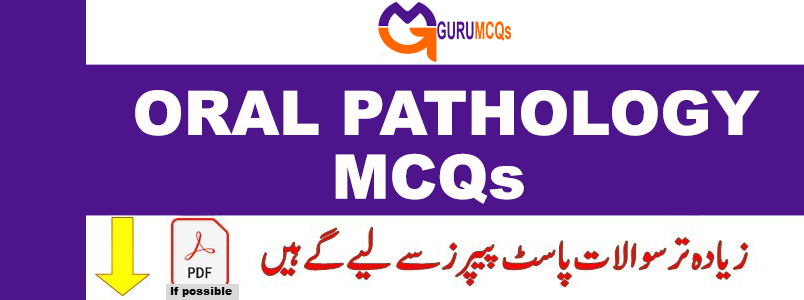
The mouth, being a vital organ with diverse functions, is subject to various diseases falling under the domain of oral pathology. This field encompasses the study of diseases affecting the mouth, jaws, and associated structures like salivary glands, facial muscles, temporomandibular joints, and perioral skin. Oral pathology, as a specialized discipline, focuses on diagnosing and investigating the causes and effects of diseases impacting the oral and maxillofacial region. For a thorough and objective assessment of students’ critical thinking abilities, multiple-choice questions (MCQs) serve as the preferred format. Gurumcqs.com offers a comprehensive collection of 2000+ oral pathology MCQs with answers and detailed explanations. These MCQs are carefully selected from reputable and trusted reference books on oral pathology. They prove beneficial for interview preparation, entrance examinations, competitive exams, and certifications, catering to individuals with varying levels of experience, including both seasoned professionals and newcomers. Additionally, you can explore MCQs on Oral Anatomy on this platform.
101. Osteosclerosis of bone occurs due to______________?
A. Decreased host resistance
B. Increase in the virulence of organisms causes infection
C. Increased host response
D. Occurs in immunocompromised patients
102. Venous malformation involving the leptomeninges of the cerebral cortex is salient feature of_____________?
A. Rendu-Osler-Weber disease
B. Maffuci’s syndrome
C. Angioosteohypertrophy syndrome
D. Sturge weber syndrome
103. Preauricular pain, grating sensation and partial trismus are the symptons of______________?
A. TMJ fibrous ankylosis
B. TMJ bony ankylosis
C. TMJ pain dysfurction symdnome
D. Ear infection
104. Polydactyly, craniosynostosis, late closure of fontanelles is a feature of_______________?
A. Apert’s syndrome
B. Crouzon’s syndrome
C. Pierre robin syndrome
D. Down syndrome
105. Osteosarcoma characteristically may develop in some causes of______________?
A. Osteopetrosis
B. Osteogenesis imperfecta
C. Acromegaly
D. Osteitis deformans
106. Histopathologically reversal lines are seen in_____________?
A. Cherubism
B. Fibrous dysplasia
C. Paget’s disease of the bone
D. Craniofacial dysplasia
107. Most common primary malignant bone tumor is_______________?
A. Osteosarcoma
B. Ewing sarcoma
C. Metastatic carcinoma
D. Multiple Myeloma
108. Which of the following is NOT a clinical feature of Pierre-Robin syndrome ?
A. Micrognathia
B. Retrognathia
C. Glossoptosis
D. Coloboma of lower eyelid
109. Eruption fails in this bone disease, as there is no bone resorption_______________?
A. Primary hyperparathyroidism
B. Phantom bone disease
C. Paget’s disease
D. Osteopetrosis
110. Mutation in GNAS 1 gene is associated with________________?
A. Fibrous dysplasia
B. Ossifying fibroma
C. Focal cementoosseous dysplasia
D. Periapical cementoosseous dysplasia

Pingback: Oral Histology MCQs Questions for Test and Exam Preparation | GURU MCQS
I was recommended this website by my cousin. I’m not sure whether this post is written by him as nobody else
know suc detailed about my difficulty. You are wonderful!
Thanks! https://www.waste-ndc.pro/community/profile/tressa79906983/
I was recommended tthis webnsite by my cousin. I’m not suure whether this post is written by
him as nobody else know such detailed about myy difficulty.
You are wonderful! Thanks! https://www.waste-ndc.pro/community/profile/tressa79906983/